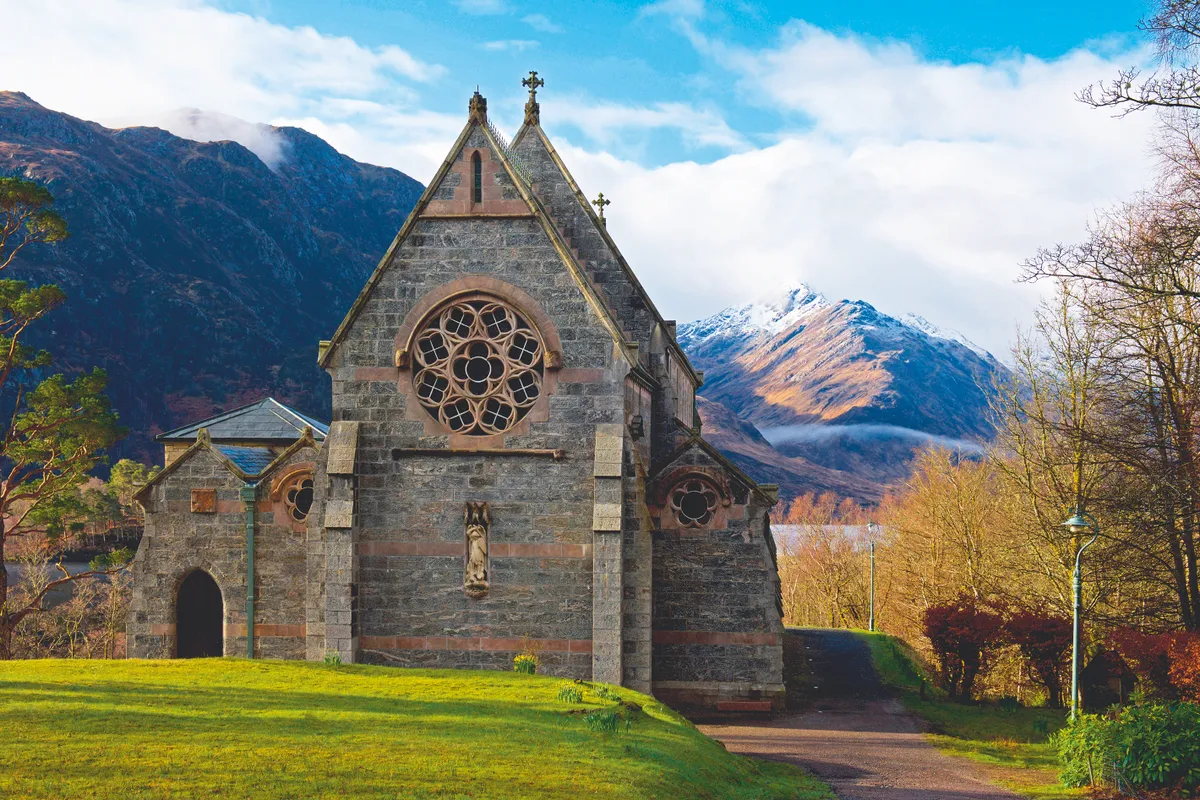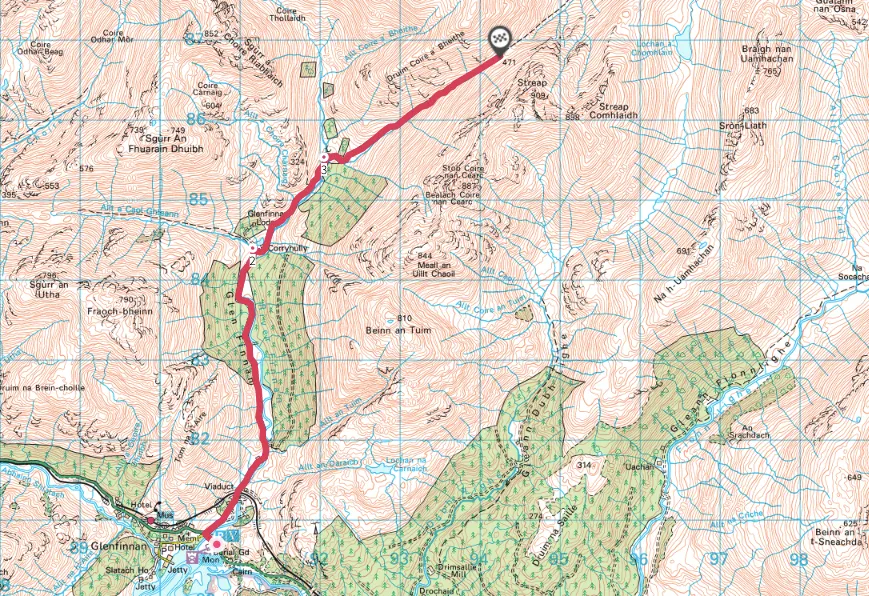Gothic in style, the Church of St Mary and St Finnan stands like a stoical watchman over the mountain-flanked waters of Loch Shiel, surely one of Britain’s most enchanting landscapes.
In autumn and winter, as day breaks from a cloudless night, the glen is particularly magical. Frost envelops everything: the pine trees, the mountain ridges, the church’s pitched roof. It dusts frozen puddles, crunches beneath feet and petrifies plants.

Like father, like son
The Church of St Mary and St Finnan, built between 1870 and 1872, was designed by architect Edward Welby Pugin, son of one of the greatest British architects, designers and writers of the 19th century Augustus Welby Pugin. But rather than hide in the shadows of his father’s repute, Edward became a pivotal member of the architectural community in his own right, designing over 100 Catholic churches and cathedrals before his death in 1875. The church here at Glenfinnan, ambitious in character, size and location, may well be his greatest.
Just down the road is the Glenfinnan Visitor Centre, with a shop, toilets, café and accessible parking. The centre is the starting point for a 10-mile walk (the first half of which is suitable for those with access challenges) from Loch Shiel to the dramatic mountain pass of Bealach a’Chaorainn.
1. Witches and wizards
Leave the car park and turn right on to the A830; the ‘Road to the Isles’, as it is also known, links Fort William with the port at Mallaig. Look out for traffic as you follow the road for 150m, crossing a bridge over the River Finnan before turning right into a small parking area. The car-free track enters trees, winding gently uphill for 800m to Glenfinnan Viaduct. This spectacular horseshoe bend of the West Highland Line, elevated 30m above the valley floor, is a remarkable feat of engineering, though these days it is perhaps better known for its supporting role in the Harry Potter films. Either way, there is something magical about the early-20th-century rail bridge.

2. Riverbank bothy
Route finding is easy for the next 3.5km, even after snowfall. Tuck your map into your bag and follow the single-track road north beside the River Finnan, verged on your left and right by the broad-shouldered peaks of Tom na h-Aire, Fraoch-bheinn and Beinn an Tuim. Take the small bridge over a tributary of the Finnan and pass in front of Corryhully bothy; the mountain shelter is run by the estate and often open to the public.

The track becomes rougher as it climbs through the valley for about 2km to another footbridge. Cross the river, keeping right on the main track.
3. Mountain country
With each step the valley narrows and, all of a sudden, it feels as though you’re in true mountain country, especially in the colder months when winter snows accentuate the height and crags of the surrounding Munros. Over the next 2.5km, the path rises almost 400m.
It’s a tough climb, but as you reach Bealach a’Chaorainn, pillared on either side by the twin peaks of Streap and Sgurr Thuilm, your efforts are rewarded with immense views.

Take a few extra paces to the northern side of the pass and the head of the next valley. Cut first by glacier and then by river, the fluted walls of Gleann a’ Chaorainn descend like a whale’s gullet to the vast forest lands and moors of Glen Dessary – another adventure for another day.
Glenfinnan walking route and map

Main image ©Jake Graham
